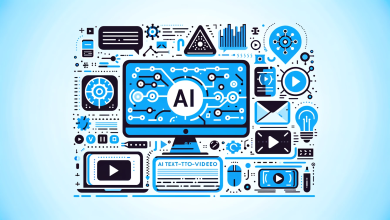
DevOps drastically changed the game when it first appeared. By putting IT operations inside the software development trenches, it created an environment that significantly shortened every aspect of the software development life cycle (SDLC).
And with machine learning (ML) gaining traction shortly after this shift, MLOps became the next logical step in that evolution. It essentially applied the same DevOps principles to the machine learning life cycle (MLLC), elevating AI model deployment to new heights.
But as AI systems continue to grow rapidly and expand into healthcare, finance, and other industries where regulation is instrumental, MLOps is slowly but surely reaching its limits.
Now that security and auditability are just as important as the system’s performance, we can’t wait to see what the future of MLOps holds. And that’s precisely what this article is all about.
What Is MLOps and Why Do We Need It?
In layperson’s terms, MLOps is essentially the extension of DevOps practices to ML. The goal here is to automate and manage the entire MLLC, and that primarily includes data collection, training, and model deployment via CI/CD pipelines.
Say you’re running a financial service company. You could use MLOps to build a real-time fraud detection system that continuously monitors performance and re-trains itself as new data becomes available.
[Source: Pixabay]
In fact, that’s precisely how modern identity theft protection tools work. They use MLOps services to process and analyze massive volumes of data in real time. That allows them to simultaneously track innumerable transactions and detect any anomalies in login attempts, thus stopping fraud before it even occurs.
Ultimately, such an approach bridges the gap between isolated AI model management and its reliable use in the real world. And that’s exactly why businesses need MLOps in the first place.
Benefits of Implementing an MLOps Strategy for Enterprises
The business value of MLOps lies in how it transforms siloed ML experiments into a unified system that extends proven DevOps practices to the entire MLLC. As such, it comes with countless benefits, including the following:
- Faster model deployment: MLOps is all about enabling CI/CD pipelines for ML models, which drastically reduces the amount of manual work needed for their training and validation. This level of automation lets businesses go live much faster.
- More reliable ML models: MLOps also adds version control for datasets and code into the mix. This makes it drastically easier to track changes and revert back in case of errors. It also ensures everything performs exactly as expected, thereby producing high-quality models that enterprises can rely on.
- Improved collaboration across the board: One of the main advantages of DevOps is enhanced team communication, and MLOps takes that to another level. It essentially brings tools that support seamless collaboration between data scientists, ML engineers, operations personnel, developers, and even stakeholders.
While MLOps offers numerous advantages, not every decision-maker is comfortable making such a drastic change. If that’s the case, you can always hire dedicated MLOps consulting services like Stackoverdrive.
Potential Limitations of the MLOps Approach
MLOps already optimizes resource use through automation. However, these ML models still require massive amounts of computational power, with complex ones requiring significant GPU horsepower to run without hiccups.
Once you take into account the cost of a modern AI-focused GPU, you can immediately understand how expensive MLOps implementation can get. As you can imagine, not all companies will be able to afford it, especially smaller ones that simply can’t justify such an investment.
That said, this isn’t an issue for enterprises. These large businesses can easily allocate hundreds of thousands of dollars to adopt MLOps. In fact, they’ve been doing just that across the industries, as for many, the benefits easily outweigh the costs.
Future of MLOps: Rise of Multi-Model MLOps Infrastructure
As companies across various industries move away from single AI systems, a multi-model MLOps approach offers obvious advantages over its predecessor.
This approach relies on multi-model serving (MMS), which is all about making the most out of your infrastructure. As its name suggests, multi-model MLOps allows businesses to put multiple models in a single container. Add a little bit of intelligent scheduling into the mix, and you can immediately see why it’s poised to become the next big step in the game.
[Source: Unsplash]
That’s not to say that MLOps is going out of style anytime soon. In fact, it remains at the heart of multi-model MLOps. So, instead of entirely replacing the older approach, multi-model MLOps essentially removes one of the main drawbacks of its predecessor.
By enabling businesses to deploy multiple models on a single shared server and keep the most frequently used ones in memory, multi-model MLOps offers significant potential for both cost and energy savings. As such, it tackles one of the most common pain points: implementation cost. That’s precisely what makes it the next logical step in the evolution of MLOps.
Conclusion
In less than a decade since the term was first coined, MLOps has managed to gain significant adoption and fundamentally change how we deploy machine learning models. By applying proven-to-work DevOps principles across the entire MLLC, it brought automation to AI models, making them far more easily deployable.
Yet, the benefits of the MLOps approach don’t end there. With the rise of multi-model serving, the next generation of MLOps practices, appropriately named multi-model MLOps, is poised to significantly reduce the implementation costs of complex ML model deployment and make scaling that much easier.







